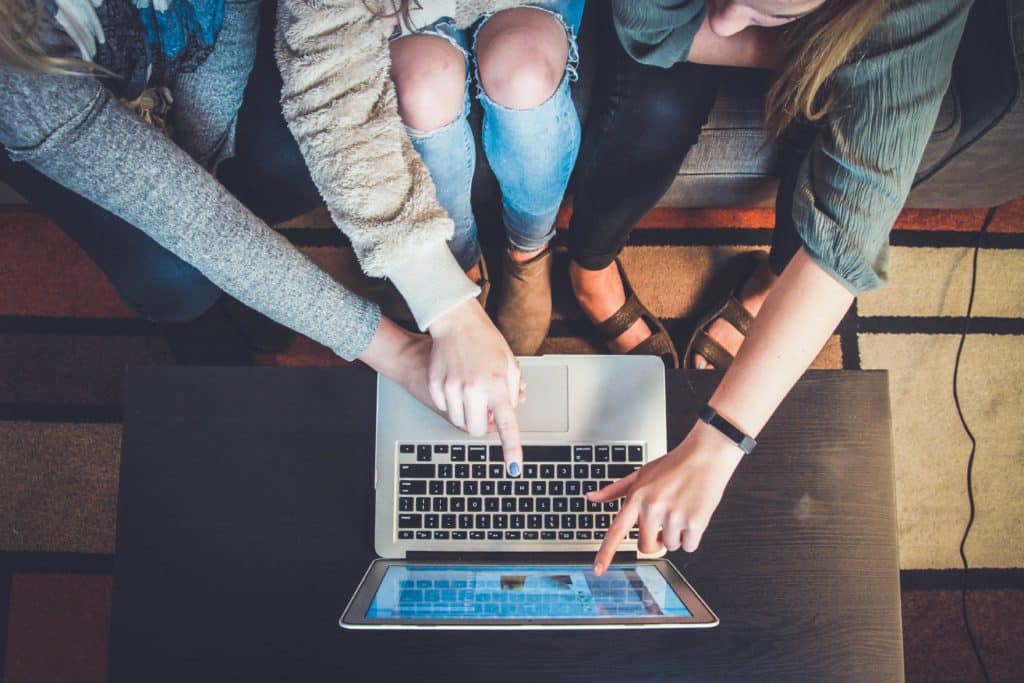Brands in the fashion, luxury, and beauty industries are devoting an ever-increasing portion of their budgets to influencer marketing. But achieving success with influencer campaigns isn’t as simple as it sounds. The social media landscape is ever-shifting beneath our feet and, as we’ve seen, events like the global pandemic can drive momentous changes in the way content is created, delivered, and responded to.
For B2C companies, staying on top of these changes is key to understanding audience behavior and achieving success with influencer marketing.
So, let’s take a look at six key influencer marketing trends shaping the landscape today.
Giving influencers more autonomy
In the past, brands tended to have a laundry list of requirements and revisions during their influencer partnerships, but that’s all changing. Increasingly, brands are shifting the power towards influencers when it comes to collaborations and partnerships.
The reason for this is simple. Allowing influencers to drive the creative direction of the content makes the partnership resonate with audiences in a more relatable way. Posts or videos fit in better with the influencer’s overall channel or feed, opinions are expressed in a more genuine voice, and products can even be presented in ways that are raw and unrehearsed – all of which leads to greater trust from followers.
In short, by shifting control back towards influencers, brands can generate more authentic, humanized content that really converts.
Data-driven decision-making
Throwing products at an influencer and then waiting to see what happens is no longer a valid strategy – far from it. Fashion and beauty brands have come to realize the importance of data-driven decision-making at all points along a campaign, from choosing who to work with to tracking performance and continually optimizing as the campaign progresses.
For maximum success, brands need to tap into data from other brands in their space as well as their own. Doing this can help you determine which content types are best for reaching your audience, which platforms to be present on, which influencers to reach out to, and how much budget to allocate to influencer campaigns. Once a campaign is up and running, tracking data across various dimensions allows you to optimize the current campaign and future ones. Because a data-driven approach is so critical to campaign ROI, more and more brands are choosing to invest in influencer marketing and many digital tools to support those efforts.
Measuring influencer performance and data is also key to evaluating their performance against Eastern counterparts like Key Opinion Leaders (KOLs). Influencers are often utilized differently between the West and the East. KOLs in China still share content and are often part of brand campaigns where the creators share information, content, and opinions with their followers. But KOLs often maintain their main professions, such as journalists, entrepreneurs, etc., which helps legitimize them as opinion leaders. The social media landscape that they leverage also differs significantly, therefore the effectiveness of the content created by KOLs vs influencers does too, as KOLs are known for having very devoted followers who hang on their every word posted on Chinese social channels like Bilibili and RED.

Increased focus on video
Video continues to grow in popularity, keeping it firmly on the list of influencer marketing trends for now and into the future. An already popular format, Covid drove influencers even further towards video as platforms like TikTok which has taken over as the most downloaded non-game app globally in the first half of 2021, with over 380 million first-time downloads. Popular TikTok creator Dixie D’Amelio has a known affiliation with the luxury fashion house Valentino which represents all of the Media Impact Value™(MIV®) generated by her brand mentions from January to May 2021. Her average engagement rate per post sat at 4.62%, and her average MIV® garnered was $626.7K for Valentino.
Video content is also more humanizing for both brands and influencers as it allows followers to get an in-depth and intimate look into their favorite influencers' lives, in a more 'unfiltered' way. IGTV and Instagram Live have also become more popular than ever before, as they represent mediums for influencers and celebrities to get closer to their fans in real-time.
On top of this, Instagram has continued to push its shoppable features, with TikTok following suit in 2021 by announcing its own live shopping tools. As these features continue to expand, consumers will find it easier to purchase products they like directly from influencers online, thus driving more conversions through video.
Similarly, the immersive shopping trend continues to boom on YouTube, where fashion brands are leveraging video marketing on the platform to ensure that consumers engage with their products at the very start of their buying journey. The platform itself has recognized and is working to facilitate this by focusing on the development of features like augmented reality try-on, interactive 3D ads, and shopping directly from live streams.
Fostering long-term partnerships
There is immeasurable value in long-term relationships, and this applies to influencers as well as customers. Rather than running one-off campaigns that last a few days or weeks, fashion and beauty brands are increasingly fostering long-term partnerships or collaborations with influencers.
This has several advantages:
- It helps with tracking and measuring campaigns. Both the brand and the influencer get more opportunities to experiment and discover what works and what doesn't so they can optimize for greater success.
- Establishes a greater level of trust. Followers who see the influencer regularly interacting with a brand are more likely to trust that the relationship is an authentic one. They see that brand or its products as being a genuinely important and ongoing part of the influencer's life.
- It keeps the brand top of mind. Having a consistent presence in your audience's feeds via your chosen influencers keeps your brand visible and top of mind for when a purchasing opportunity arises.
The bottom line is that long-term partnerships deepen the influencer’s relationship with the brand, which allows them to engage more with it, thus building both visibility and credibility among their followers. The value of these relationships can’t be underestimated, as influencer Bella Poarch generated a total of $9.89M in Media Impact Value™for NYX Cosmetics from January to November 2021.
Leveraging influencers to promote brand values
We live in a world where consumers care increasingly about the values of brands they engage with and demand accountability and transparency from companies that they buy from. In recognizing this, many brands have shifted from product-focused campaigns to using influencers to communicate their values. This trend in influencer marketing allows those values to be heard directly from the mouth of someone the audience trusts, rather than from the brand itself.
This is not to say that products shouldn’t feature in influencer posts, but rather that they’re not the primary message. The focus is making audiences aware of and believe in the brand’s values and mission, whether those are related to sustainability, body positivity, equality, or something else. What’s most important here is choosing influencers whose values align with those of the brand – otherwise the partnership won’t feel authentic to followers. Instagram has announced further actions to support brand partnerships for creators.
Giving power to micro-influencers
To conclude our list of influencer marketing trends, let’s consider the different types of influencers and their popularity with brands. While it’s true that mega-influencers and all-stars tend to capture the most attention from luxury brands with big budgets, there are still huge opportunities to drive ROI from those with fewer followers.
Many brands recognize that micro-influencers bring a number of benefits to the table: they’re cheaper to work with, have a powerful influence in a small and focused field, and tend to have high levels of authenticity. One marketing strategy is to split campaigns across influencers of various tiers, then use data tracking to measure engagement and conversion across them.
While micro-influencers aren’t a new thing, they are being given more power. For example, in late 2021, Instagram announced it was opening up link stickers to all users – a feature that was previously only available to accounts with over 10,000 followers. This marked a massive milestone for smaller content creators who previously may have been overlooked by brands on the platform.
Keeping a finger on the pulse of influencer marketing trends is crucial for any fashion, luxury, and beauty brand that wants to maximize its presence online. By understanding the six trends above and incorporating them into your influencer marketing strategy, you can build stronger partnerships, connect more intimately with audiences, and drive greater returns – both now and into the future.
